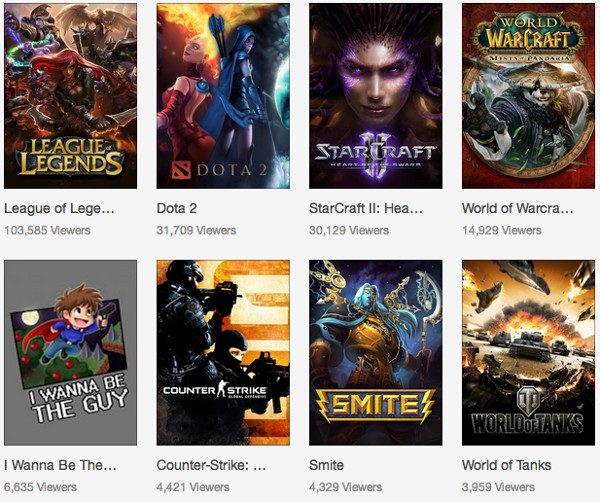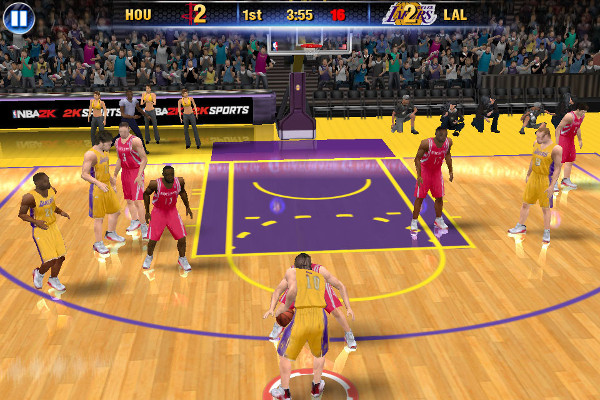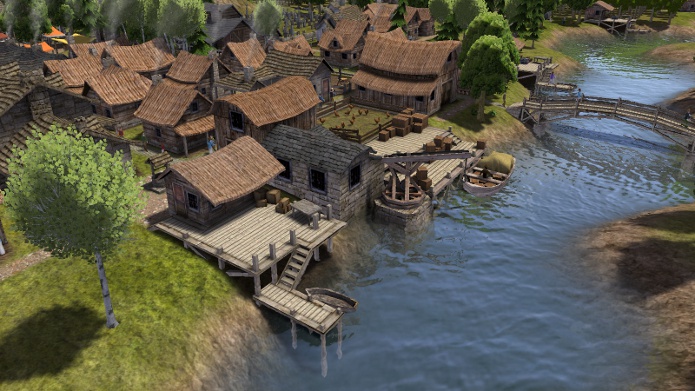
Between 1851 and 1862, there was located in Leicester Square as a tourist attraction a giant, hollow globe, 60ft 4 inches in diameter, which visitors could enter; to see, from the inside, and from various layers of platforms, a complete and three-dimensionally contoured map of the world as it was then known. Largely forgotten now, Wyld’s Great Globe was one of the most popular sights of its day. Built by James Wyld, a sometime Liberal MP for Bodmin and enthusiast of cartography, it was one of the first populist attempts to present to the public The Map as a fixed and objectively scientific image of what the world was like. This was the age of the Railway Timetable, and of the origins of the Ordnance Survey. The trends exhibited by Wyld’s Great Globe are insightfully presented by Marx and Engels in the first part of The Communist Manifesto: the world having been ‘discovered’ by capital, capital now moves endlessly over it, transforming it in the process, building lines of communication and imposing ostensibly objective descriptions over it that allow every aspect of it, no matter how foreign and distant, to be made useful for industry. In this attraction, itself imprisoned in a neo-classical hall in Leicester Square, the public would flock to see presented the positive account of this vision: the whole world, reduced to the means by which it could be controlled.
…
Since then, capitalism has moved on; grown beastlier, subtler, more complex. But the mode of reification that it practices has largely stayed the same. Until, perhaps, now. Wyld’s Great Globe has long ceased to stand in Leicester Square, but it is now the site of the M&Ms store.
Leicester Square is, of course, a great monument of hyperreality, perhaps the UK’s only truly hyperreal place (proof, if necessary, that the UK is at an insufficient stage of capitalist development, because it has so few of them). It is a world of massive Pizza Huts and Burger Kings; of teeming crowds going nowhere; of megalithic cinemas where you are served buckets of popcorn and soda that seem designed for a race of giants, not for humans; of casinos and shitty nightclubs full of sixth-formers; of bright lights and dodgy street vendors. It is a place where at all times you feel both something and nothing could happen, which you want to give yourself totally over to in a moment of intoxication and nihilism, but which you know already has been set up as a practical joke, with yourself as the victim. In short it is a perfect image of capitalism: blown up, as hyperreality, to a clearer and more objective projection of its tendencies. But of all the sights of Leicester Square, it is the M&Ms store that stands as the greatest clue as to where capitalism is going. Increasingly, I find myself hanging around Leicester Square a lot these days, and it is always the M&Ms store to which I am most drawn, and from which I have learned the most.
The M&Ms store is the site of the latest and most important developments in reification. We are used to thinking that reification, in the capitalist epoch, is total: familiar from the Frankfurt School is the thought that there are no ‘unreified’ relationships left anymore, that in every interaction, no matter how intimate, we can make out the profit motive, the yoke of capitalist dominion. But although the old style of reification was successful in colonising everything on the face of the earth and transforming it, the only transformation that it was able to affect was incomplete. Another familiar thought from Adorno et al is that there remains some remnant – albeit damaged but nevertheless salvageable – of ‘unreified’ experience at the bottom of reality somewhere, which we can awaken through modern art, serialist music, or suchlike. This is because the ontology of scientism, which informed the old style of reification in the golden age of capitalist industry, was insufficient to capture everything in reality: it was monistic, and attempted to reduce everything to something quantitative, which meant quality was shunted out of its universe, only to return, to disrupt it and offer the power of resistance. The M&Ms, however, offer us a new sort of ontology that will allow a total reification, thus complete transformation, of everything in our universe into something consumable: M&Ms. The M&Ms store is the herald of this new form of reification.
…

We all think that we are familiar with M&Ms. An M&M is a hard-shelled chocolate candy, which comes in bags of multiple colours that all the taste the same: the M&M does not do flavours. There are however various varieties of M&Ms: plain chocolate, peanut, almond, dark chocolate, pretzel, ‘crunchy’. Most commonly, you only see plain chocolate and peanut M&Ms for sale in the newsagent.
The M&M is round, if it contains a peanut slightly convex, and features a white ‘M’ impressed on its front. If you pour a packet of M&Ms into some beer, something that on purely culinary grounds I would not recommend, then the letters will peel off from their shells and float around the beer on their own, like a ghost trying to spell out a message from some lost past, or perhaps an all-too-imminent future, in which there is only the letter ‘M’.
The M&M is not a particularly nice or exciting sweet, and it is broadly speaking more expensive than the alternatives. It is inferior to Revels, or Maltesers, or Skittles. Indeed, the M&M has no real independent justification for continuing to exist: purely as a foodstuff it seems like it should not have a market.
Nevertheless, the M&M is a decent-enough object of desire. Its hardness and roundness gives it the satisfactory weight of money in your hand, they jingle about like coins in a purse in an opened packet; and the sweet itself, once you come to eat it, can be approached in various ways: shovelled into the mouth in palmfuls, carefully bitten in half, you can eat the shell first and then the chocolate second, and so on and so forth. Certainly they are the sort of thing that, despite the brackish flavour of the chocolate, you find it hard to stop eating once you’ve started. For all that, of course, they seem an odd candidate for something on which you might build a whole universe. Yet this is, apparently, what is happening today. At a guess, I would say that it is precisely because, as product, the M&M is so inconsequential that the edifice of the M&Ms store and all it represents can be constructed on them. The new ontology of the M&Ms is, ultimately, built on something entirely fungible.
…
The London branch of the M&Ms store (there are also locations in Las Vegas, New York, and Orlando, Florida) opened in July 2011, a personally terrible time in my life. 13th July 2011 was the day I was finally, definitively, left by the woman who is still, really, the only person I have ever properly loved, outside a bad pub in Manchester where I had just smashed an empty beer bottle in heartbreak and frustration, and meanwhile in London the world’s largest candy store, 35,000 sq ft of floor space spread over four storeys, was opening to great fanfare and with all 5 official ‘spokescandies’ in attendance. I had no idea, at the time, of course, that this was going on: even if I read the sort of publications that might have informed me about it, I would have been beyond caring.
I first encountered the M&Ms store a few months after that, in October of the same year, on an occasion when I had been drinking in Soho with this girl I had been seeing in the aftermath of that break-up. We’d stumbled down to Chinatown to get some food, and then I think it was after we’d eaten, about ten thirty at night maybe, when we found ourselves walking, with no particular aim or direction in mind, into Leicester Square, when we saw it, and really it is impossible to emphasise how strange and delirious a sight this is when you’re not expecting to see it there: this giant shop, this really baffling huge store, which is just M&Ms. Why does it exist? Who would make this? Who would go to this? What could it possibly, really, contain?
The streets outside stank of an M&Ms smell analogous to, but more overpowering than, the bread smell that Subway pump out of their shops, and the bright yellow lights of the place gushed with equal allure onto the streets, even in competition with the rest of Leicester Square. There could never have been any possibility of us resisting this shop. We staggered in, grinning and giggling like idiots. The place was huger and more busy than we could have possibly imagined, even from outside. And every single thing in the world was for sale there, only branded with elements of the M&Ms Gesamtweltanschaung.

This really was the most delirious thing of all, when I first realised what this store exactly was. It is not just a large shop, selling M&Ms candy: it is so much more than that. In fact, you can’t even buy a regular bag of M&Ms there, not like you would in a newsagent, although you can pay around £7.50 for a box of them, or more for a different sort of novelty box, less perhaps for another, and there is a ‘pick and mix’ area where you can create your own M&Ms mix by colour. But you can buy, for instance, M&Ms keyrings. M&Ms fridge magnets. M&Ms mugs, M&Ms shot glasses, M&Ms beer steins. M&Ms t-shirts, M&Ms pyjamas, M&Ms underwear, M&Ms headgear, M&Ms winter woollens, M&Ms swim-wear, M&Ms beach towels. M&Ms cutlery, M&Ms plates, M&Ms teatowels. M&Ms plush toys (my favourite is the Blue M&M dressed as a policeman), M&Ms pillows, M&Ms action figures, M&Ms yo-yos, M&Ms electronic memory games, M&Ms poker sets. And this is just the tat. There are some genuinely expensive, luxury items that you can buy at this store too. For instance, if you really wanted to, you could spend around £200 on a limited edition statuette of the Yellow M&M surfing, or about £950 of one of them all in a band. The M&Ms Swarovski Crystal leather jacket will set you back £2,500, and it is one of the most hideous artefacts I have ever laid eyes on in real life: an anticipation I think of something very special, the extravagance it represents one that has yet to fully come into existence.
The shop itself is officially called ‘M&Ms World’, and this is an accurate name for what it represents. The whole world, forced into M&Ms form. Everything that has ever happened in human history is represented in the store in some shape, the shape being that of M&Ms: football, London public transport, the sexual objectification of women, and the Beatles are all variously represented in large-scale form at points in the store. In one section, the walls are covered with mock-up oil paintings of great figures from British history and folklore: King Henry VIII, Queen Elizabeth I, Shakespeare, Lancelot and Guinevere, and Sherlock Holmes are amongst those represented. The suggestion in them is that an entire subterranean history has been going on parallel to our own, an M&Ms history, and that it has followed the exact same course as our own, just in M&Ms form. A further suggestion, that any close engagement with the pictures would be able to discern, is that, given how ridden with murk and misery the course of our own history has been, maybe it, totally straightforward in its progression towards the consumer freedom and felt plenty of our present mode of life, is after all the truer.
But for all this, perhaps the weirdest thing about the store, or at least what struck me most during my first visit there, that left me most disturbed, is that, despite the fact that, as I have related, this is a massive shop in a very prominent location in the centre of London that is really just M&Ms, and, moreover, is very obviously attempting to reproduce the entire human world in M&Ms form, the vast majority of people in it at any one time do not appear to find this fact at all strange. People of all ages and from all walks of life – OK, most of them look like tourists, but you know: individuals, couples, groups of young men and women, old people, families – are walking around this shop, one of the strangest places I have ever encountered, perfectly happily, shopping for all the tat it contains and getting their pictures taken with the M&Ms characters, as if it was the most normal thing in the world. It is precisely this normalisation, which apparently had been successfully affected towards everyone in the store who wasn’t me or this girl that I was with, that struck me as being the most sinister thing about this place, if not the source then at least some sort of confirmation of what I even suspected then as being a truly evil power; the way that everyone could just go there, to this utterly ridiculous place, and just kind of accept it and buy their stuff, without even finding it in the slightest bit funny, when I was completely mindblown and giggling off my head. Why couldn’t they see it? What had the M&Ms done to these people? That night I had a dream in which I found myself in a giant shopping mall in what appeared to be a sort of star station drifting through some distant solar system, maintained only by totally synthetic food, where an infinity of replicas of myself were being purchased by people with no eyes.
…
Strange as everything about this store may be, it could still potentially strike the casual visitor, even one reflective enough to realise its strangeness, as just a particularly bizarre marketing exercise. A really weird thing to exist that probably loses the company huge amounts of money every day, but no more than that. But the idea (which must really be how someone common-sensically intelligent would approach this place) that it is just a sort of big advert cannot possibly do justice to how total the vision is that the M&Ms store presents. Someone could live in this store forever, and they would have everything they need. Right now, granted, they will having to be relying almost exclusively on M&Ms candies for nutrients, but the peanut ones should give them enough protein, and the recent proliferation of ‘Keep Calm and Eat M&Ms’ t-shirts suggests that M&Ms cupcakes are not far off around the corner. Meanwhile we can easily imagine the M&Ms store one day containing an M&Ms deli counter, an M&Ms artisan bakery, an M&Ms fishmonger, an M&Ms salad bar, and so on and so forth. The M&Ms curry house will serve dhals made from M&Ms substituted for lentils, and you will be able to bring into it your own booze, bought from the M&Ms microbrewery, wine cellar, or distillery. The M&Ms store will expand to contain the whole of Leicester Square, owning a concert venue where they put on only bands dressed as M&Ms, who play M&Ms-related songs (you can already hear M&Ms songs over the in-store radio, vacuous autotuned pop copies going on about ‘sweetness’ and ‘flavour’ and ‘try the pretzel ones’ and not melting for anyone and world domination). The cinemas will only show films starring M&Ms in all the central roles, each spokescandy playing themselves as a version of the archetype they embody, like the figures from the commedia del’arte, or the Carry On films. An M&Ms school will be established, then an M&Ms university, so that every generation of your descendants will be able to only learn, forever, of M&Ms. You will have married your partner in a special M&Ms ceremony officiated by one of the priests of the official M&Ms cult, with statues of the Red M&M as Jesus being crucified everywhere about. This is, indeed, only a marketing exercise in the same sense that Christianity was an elaborate marketing exercise for God: it goes well beyond selling you a product. It gives you a self-contained totality, more even than a lifestyle. The M&Ms store gives you a Sittlichkeit, ‘ethical life': a society.

A few years ago, the M&Ms launched an advertising campaign that, even more than the store itself does constantly, really rather shamefacedly managed to give the game away. The title of this advertising campaign was simply, ‘Become an M&M’. The adverts in this series are alternately concerned to persuade people of the benefits of ‘becoming an M&M’ (you will have a lot of fun dancing around and hanging out with your friends), and giving advice about how you should live your life once you have become one (an occurrence that is presented as an inevitability), as well as what you can expect from the world and your life once this has happened. You will, for instance, find yourself incredibly tasty, but you will miss your ears. Your life will be a lot easier in some respects, since the M&Ms are not subject to many of the obstacles that stand in our way as humans, but you will also find yourself facing some crucial difficulties: one advert, for instance, shows a woman who has been turned into a peanut M&M being attacked by squirrels after her innards, which, of course, now take the form of a nut. Again, to a casual viewer these adverts might seem quirky and fun, albeit a little lame. But when watched against the knowledge that this is a product that has established a series of shops attempting to represent everything in the world warped into its own form, it can only seem like a horribly disturbing premonition of what is to come. “When you are an M&M…” all these adverts begin by saying to you. A line that, with full knowledge of what it represents, is seen to jolt from silliness to terrifying inevitability.
The success of the project that the M&Ms store is undertaking is predicated on the development of the M&Ms Character-Ontology, which it also embodies throughout itself. There are currently 5 M&Ms characters, or ‘spokescandies’ in M&Ms jargon, that we might consider truly canonical: the Red M&M, the Yellow M&M, the sexy Green M&M, the Blue M&M, and the Orange M&M. Each represents one of the central personality types that structure our world. The Red M&M is ‘outgoing’, the Yellow M&M is ‘clumsy’, the sexy Green M&M is ‘flirty’, the Blue M&M is ‘cool’, and the Orange M&M is ‘paranoid’. They also all have their own slogans, which are splashed around various points of the store. The Red M&M’s slogan is the sinister “Everything is Under Control,” the Yellow M&M’s is “Inside Everyone There’s a Little Nut.” The sexy Green M&M has “I Melt For No-One,” (because she is a strong, independent lady) and the Blue M&M the supposedly suave but really terribly sad, “Never Let Them See You Melt.” The Orange M&M’s, meanwhile, is “I’m a Dead Man,” which is a frankly terrifying slogan to think a marketing man must have come up with (the Orange M&M is indeed a constantly frightened and really pathetic figure, totally ill-at-ease in the world he has been thrust into by his creators; and this fear and disturbedness has been made, by them, inherent to his nature. I hardly dare speculate about the cruelty of anyone who would think to bring anyone like this into the world, one who suffers so, even as a fictional character. On the box of the M&Ms poker set he is depicted as about to attempt suicide).
A large section of the M&Ms store is given over to a ‘Pick and Mix’ area where you can ‘Create Your Own!’ unique M&Ms mix based on colour. This section of the store, on the surface level, makes no sense whatsoever: M&Ms are of course not, in themselves, meaningfully differentiated based on colour. The clue to its existence is only found on the storey below, which contains an ‘M&Ms mixology lab’, in which trained M&M ‘mixology professionals’ will make you a mix, similar to the ones you might make yourself at random or based on arbitrary whim in the Pick and Mix, informed somehow by the ‘science of M&Ms’. Accompanying the lab is a ‘Periodic Table’ of M&Ms (see picture below). Centrally important to the M&Ms Periodic Table is the line on the left, which contains the five fundamental ‘character colours’. The middle group supplements these character colours with the 17 other available colours which your M&M can be. The right column then demonstrates how these colours can be combined as the structure of some aspect of our world: Universities, Stone Circles, Palaces, etc.

What must I think strike us about the Periodic Table as it appears in the store in its present form is that it is obviously incomplete. In particular, the right column is far too sparse to really demonstrate what the store clearly hopes to accomplish: that it might someday capture all of reality, in all of its richness and fundamentals, with the Character-Ontology of the M&Ms. This is the great secret of the M&Ms store, really: that it is not merely, what it would be if it was simply a bizarre marketing exercise, attempting to reproduce everything in the world, in M&Ms form, self-contained in the store. Rather, it hopes to reproduce everything in the human world and then replace it, with M&Ms. The entire endeavour feels like something out of the Borges story, Tlön, Uqbar, Orbis Tertius, in which the discovery of an encyclopaedia detailing a mysterious world ends up producing conditions in which the world described in the encyclopaedia ends up replacing the original one. The process described in the Borges story is of course that of reification, and the M&Mification of the world can thus be seen to be a form of reification. What makes it a historically important new form of reification is not simply the fact that it is emerging now, at our present moment of history which is after all in a sense always qualitatively the newest, but also the particular strengths of the Character-Ontology, which suggest that it could do so much more than reification of the old form ever could. Borges was of course writing in a capitalist world, a world that had already been reified, but he could nevertheless imagine an alteration of the world more complete than anything the industry of his day had managed to affect: the total replacement of our world and its history by Tlön. If he had himself replaced the word ‘Tlön‘ with ‘M&Ms’, we could now see Borges as our most important prophet.
Of course, the store has yet to succeed, exactly, in making the whole world M&Ms just yet. Speculatively, I would suggest that this is something to do with the fact that the Character-Ontology of the M&Ms has yet to be itself fully developed. Clearly, the ontology of the M&Ms, whatever form it has ever taken, is historically situated, and still unfolding. We see this written on the walls of the shop, on one of the sets of stairs, where the development of the history of the M&M character is depicted. Here, we see the M&M develop from a crude, almost humanoid figure in the 1950s, politely lifting up the top of his candy shell like a hat, to a set of two boy-girl M&Ms holding hands in the 60s, all the way up until the 90s, where something like the present Character-Ontology with its five characters begins to be developed. Thus, the M&M expands from one-ness to two-ness to a now-essential five-ness.
It is odd, in a sense, to think that an ontology would develop this way since, at least in the western tradition of ‘heavy’ metaphysics, we tend to intuitively want a sort of ‘one-ness’ to be underwriting everything or else for everything to be somehow tending towards: whether it is God, or the Big Bang, or the Absolute Identity of Subject and Object; the Peircean ‘final opinion’, Bernard Williams’ notion of the ‘absolute conception of reality’, or what have you. It is this drive towards one-ness that has shaped western philosophy, religion, and natural science for millennia. But just think about how this has always, historically, ended up manifesting itself in problematic ways. If you’ve got just some One thing at the bottom of your ontology, any project of reduction will inevitably fail: either it simply incorporates everything straightforwardly, in which case it cannot affect any sort of transformation (see trends in contemporary philosophy towards some form of ‘inclusive’ naturalism, in which the ‘naturalness’ of everything becomes some trivial fact about particulars), or else it heinously fails to reduce large chunks of reality down at all. We see this latter happen in modern natural science, which as I said at the start of this piece can only provide reification with an ontology that allows it to realise its project in a partial way. The reason for this is that, broadly speaking, at bottom modern natural science holds that what exists is what is ‘objective‘, which means, for the scientistic worldview: what can be described solely in the terms of quantitative scientific method. This means that anything qualitative is excluded from the start. Since quality cannot straightforwardly be reduced to quantity, the only option is to eliminate it. Eliminativist projects have of course been undertaken: by Patricia and Paul Churchland, for instance, contemporary philosophers of mind, a married couple who have done away with referring to the human emotions they consider to lack reality and have taken to referring to the relevant brain-states instead. But these projects always fail, because even the most violent form of eliminativism (I mean, for instance, an eliminativism backed up by bombs and tanks) would be unable to truly effect anything more than just a mere repression. And having been repressed thusly, the excluded qualitative moment would of course, at least if we follow Adorno, always return to haunt what has repressed it, this time with fangs.
A multiplicity, then, is needed. And since the world is a place of almost infinite subtlety and variation, if you really wanted to capture it truly in its fundamentals, you will need not only more than some One thing fudamental to your ontology, a Two won’t do either: you will need true mutliplicity, three-ness, four-ness, five-ness and so forth, and this is why I think that, going against all previously-established western common-sense, the M&M, with the particular ambitions that it has, has arrived at a genuinely pluralistic ontology. Minus a pluralistic ontology, it could never be the case that Everything could Become M&Ms. The best the M&Ms store could do would be to set up something irreducibly M&M-like at the bottom of reality and deny reality to everything that was not an M&M, but which nevertheless, of course, was felt by us to exist, as an ‘illusion’ (necessary or not). But this is laughably unsatisfactory, as the best efforts of every naïve scientivist since the dawn of the Enlightenment have shown (or even someone as sophisticated as Hume).

Character is, of course, itself something irreducibly qualitative, so by placing Character at the bottom of reality, we can see how the M&Ms store is already going to manage to transcend all of this, one of the perennial problems of philosophy in scientific modernity. Each of the characters, in the M&M world-picture, is imbued with particular characteristics which allow them to bring various aspects of reality, in all their fullness, under the M&Ms yoke. The Blue M&M, for instance, has cool, and thus can be seen to have the whole history of Hollywood leading men sedimented within him (this being his particular mode of cool: the Blue M&M would need to be supplemented by some other character if the M&Ms are ever going to absorb within them the self-destructiveness associated with punk or rock and roll; the Blue M&M is frequently depicted in-store as James Bond). The sexy Green M&M has sex, the Red M&M has power in all its forms, the Yellow M&M is a dumb workaday sucker, so presumably is able to be positioned so as to absorb much that is low-brow in culture, or perhaps just the proletariat’s false consciousness and sufferings. The Orange M&M, meanwhile, has mental illness, failure, and death (not coincidentally, he also has association football). Whereas it is impossible to really, coherently, think about ourselves as being mere collections of brain states, the emergence of which has been determined causally since the Big Bang (this all going against not just ordinary language but every aspect of our lived experience), we can perhaps we can think of ourselves as being, essentially, a Blue M&M, or a Red one. That this is something like the ultimate intention of the Character-Ontology is revealed by the machine on one level of the store which you can step into, to be told ‘what colour you are’.
But of course, the collection of characters the M&Ms have as yet, established are clearly going to be unable to incorporate all of reality within them: there is so much more richness to our world than what they can in their particular characteristics possibly contain. I predict that what we will see is, over time, more and more of the colours in the middle of the M&Ms periodic table being made into full-fledged characters: the colours, in the context of the table, are more like chemical elements, brutely quantitative and blind to all subjective evaluation. Once made into characters, they can begin to truly underwrite the parts of lived reality that the present characters cannot (something that, precisely, that which is merely ‘chemical’ could never do: hence much of the problems described above).
We can already see this happening with the figure of the Brown M&M, a character who appears in adverts and some of the merchandise in the store, but is far less prominent or developed than any of the central five characters. As yet she has no slogan, or canonical fundamental characteristic (as it might appear on the M&Ms Periodic Table), but she does seem to be a sort of confident career-woman, thus exhibiting what the M&Ms people must take to be a very different form of femininity to that incorporated within the sexy Green M&M. Once fully-developed with more figures like the Brown M&M, the M&Ms ontology will be able to incorporate into it everything under the sun, and probably we will find more and more of what it can incorporate sold in the store (this, at any rate, will be the first sign, before all of this stuff has just simply Become it… and you yourself have Become thus, as well).
But there is more to all this than just a need to fit something like ‘quality’ into the fundamentals of the world. Character, yes, can underwrite quality effectively, but lots of things can do this: a quality-involving manifold of sense-data; an abstract realm of Absolute Ideas; the Virtues; or just Language itself might all be good candidates. Why is it that the M&Ms have specifically pursued an ontology of Character, and what makes it so powerful? The answer I think is suggested to us by the figure of the sexy Green M&M. The sexy Green M&M is the M&M that you are supposed to want to fuck. There can be no other explanation for the fact that the M&Ms marketing people have had made a series of what can only be described as ‘glamour shots’, in which she poses, typically, peeling off her hard candy shell to reveal what she always calls “my chocolate,” within. Which is supposed to, I guess, be sexy, presumably because the shell represents clothing and the chocolate, naked skin (there are of course obvious concerns about this insofar as, aside from her ‘chocolate’ skin, she also has what looks like, on her arms and legs, human-like skin: this would make the candy shell the equivalent of skin for her torso, and means that in fact she is exposing her raw flesh, showing off a wound as if it was a pair of tits. I have written about this at more length here).


On the one hand, the sexy Green M&M is, in these pictures, simply incorporating some aspect of the life-world into herself, as its fundamental constituent. Specifically in this instance, she is incorporating what we might think of as the ‘mainstream’ of sexual objectification, the world of FHM’s Top 100 Sexiest Women and Sports Illustrated swimsuit editions (indeed, the first of the two images given here is a direct homage to an actual Kate Upton Sports Illustrated shoot). But of course, she is not just setting herself up as the equivalent to, for instance, Kate Upton. She is also, we know from our analysis of the character-ontology, one of the fundamental constituents of reality as such. So whereas on the one hand, we might imagine a world in which men are jacking it to the sexy Green M&M as opposed to the likes of Kate Upton, what that world would be, would be a quite different place not merely because she is a chocolate candy cartoon mascot and not a real human woman, but also because this particular chocolate candy cartoon mascot, which has taken over our (hypothetical, future) libidos, would be something that stands at the very foundations of our universe.
Thus the Character-Ontology is able to do more than just allow us to conceive of our universe as fundamentally involving things like colours and emotions: it can be weaponised by the M&Ms to construct a universe which, at the most fundamental level, we will stand in a desiring relationship to. This is thus a universe that can become, entirely, a consumer product: totally, comprehensively, reified, down to the last most minute particle, or the widest emptiness of space. It is, therefore, precisely the mode of reification that capitalism, otherwise always in crisis, most optimally needs. Not only can everything be incorporated formally, it can desire its incorporation actually. A perpetual motion of machine of constant reification.
Scientists – or, at least, Richard Dawkins, who as an apiarist who knows a bit about Newtonian physics is I suppose a sort of scientist – are always trying in vain to get us to take an aesthetic wonder in science as if it was art: the M&Ms, however, already have access to the possibility of convincing us to sexually fantasise only about whatever stands at the bottom of their reality. Think of the power of a science that was able to get the general public to centre their erotic lives around quarks. When the Higgs Boson was ‘discovered’, maybe a few hundred people got an erection. If all men generally did, this old science would seem much more durable as a world-picture. The fact that they did not, opens the way forwards for the Character-Ontology of the M&Ms.
…
Thus I would predict that one day soon, this article will seem a nonsense, because you will be, straightforwardly, an M&M, and you will see no possibility of anyone ever having really been anything other than an M&M, living in a world of Blue and Red and Orange and whatever other characters they come up with to complete the picture. What I have said here will only be able to be coherently understood as an elaborate satire on the primitive world of priests and cops and governments and banks that came before it. There will be an M&Ms store in every village: expanding outwards from London, it will have completely colonised the world, like Christianity (partially) or Industry (wholly, but unsatisfactorily) before it. Or perhaps better: every village will be an M&Ms store, the whole world will live in a series of communities focused and organised entirely around the M&M. You will see this happening in your lifetime, and so will I, although perhaps by then you will no longer think of what you are experiencing now as having been ‘your’ lifetime, only the life of something mostly inchoate that was preparing to become an M&M (and so too will I, likewise: I will not recognise myself as the author of this piece, except as proto-M&M). The first signs of your change will be when you can only achieve sexual arousal by thinking about a hard candy-shelled, round, Green woman. I consider it a matter of the gravest concern that, although I am still primarily attracted to human women, I have, outside of the M&Ms store, been impotent for months.


















































































